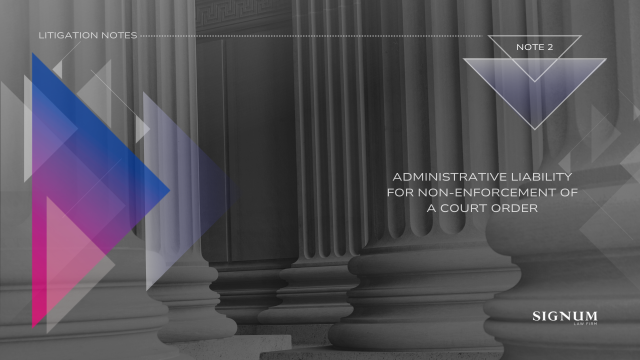Administrative liability for non-enforcement of a court order
August 28, 2023
In our work, we regularly interact with bailiffs either as colleagues on the same team or as separate teams. Recently, we had to dispute with a state bailiff (SB).
The court issued an order to our client (the debtor) to rectify defects in the information system that was developed and supplied under the public procurement contract. The court’s order did not include any specific actions and deadlines for the rectification process. The client diligently started fixing the defects, successfully rectifying over 80% of them within just a few months. Due to the specific nature of the work, the agreed-upon deadlines with the customer were constantly changing as we address each defect, install the software, conduct tests, gather and analyze data, and identify new defects.
Even though the deadline was agreed, the customer referred the court decision to the state bailiff for enforcement. Of course, the state bailiff was not in a position to compel the client to perform any actions to enforce the decision beyond what the client was already complying with. Despite the ongoing enforcement proceedings and the passing deadlines, the state bailiff has initiated an administrative offence case against the client under Article 669 of the Code of Administrative Offences for the failure to enforce a court decision.
The court ruled that the client's actions did not constitute an administrative offence. Thus, the court stated that the client had neither acted nor failed to act with the intention to evade the execution of the court order. The court noted that (1) the decision did not specify the required action by the client; (2) there was no mention of a deadline for rectifying the defects in the decision; (3) there was a correspondence between the client and the customer, which included regular progress reports, minutes of meetings, acceptance letters from the customer acknowledging rectified defects, and an agreed-upon schedule for defects rectification, among other things.
To mitigate the risk of administrative liability for non-compliance with a court order when no specific deadline is mentioned, the following practical steps can be a recommendation: (1) attempt to negotiate and agree with the creditor on a plan or schedule for completing the required actions. If the creditor refuses to agree, create a unilateral plan/schedule and share it with the customer while requesting confirmation of any disagreement; (2) maintain written documentation for each action or its completion, including protocols, cover letters, acceptance certificates, etc.; (3) send regular progress reports to the customer at agreed intervals (weekly, monthly, or quarterly). All this steps may reduce the potential risk of facing administrative liability for non-compliance with the court order.


